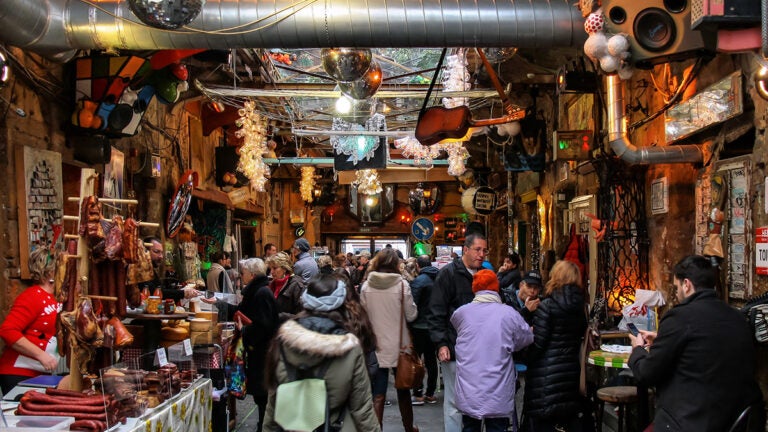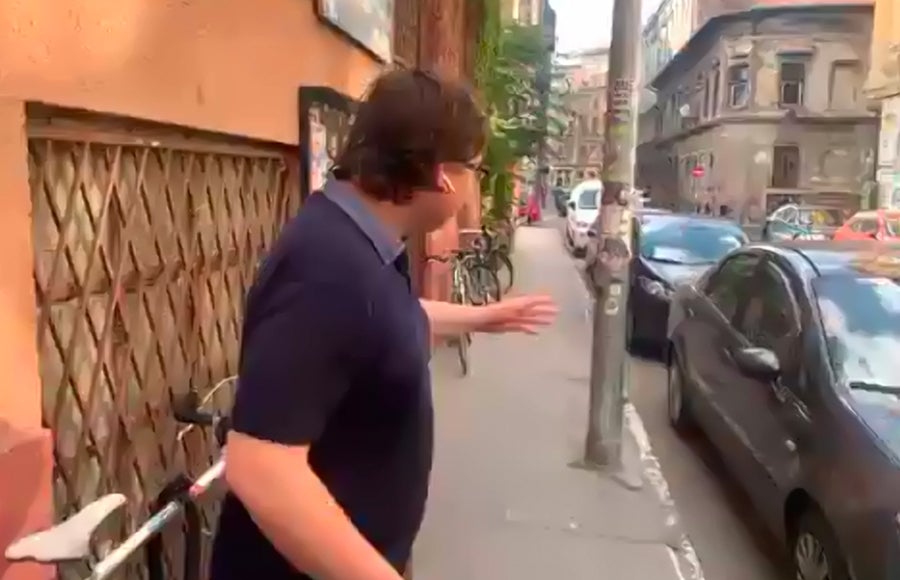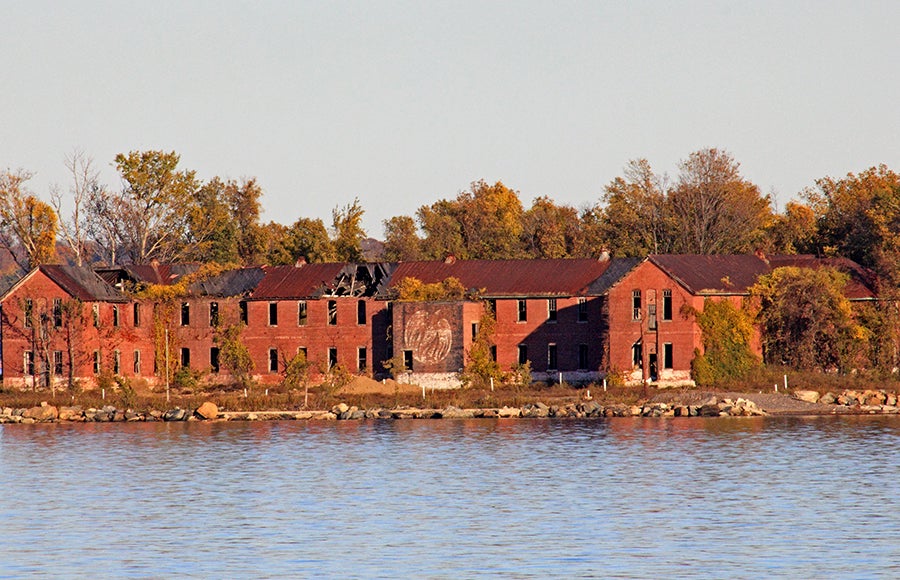
Students study abroad while staying safe from the coronavirus
The loss of the travel component of Maymester courses due to the COVID-19 pandemic was devastating for students and faculty alike, especially those who had been planning to go abroad. There is no true substitute for tasting different moles in Oaxaca, walking through the different neighborhoods of Budapest or visiting the world’s most famous mausoleum, the Taj Mahal.
Regardless, USC Dornsife professors didn’t back down from the challenge of providing their students with an immersive virtual Maymester experience. Whether it was incorporating more films and music into the course, having students cook traditional dishes, arranging curator-led virtual street and museum tours or, in one case, overhauling the syllabus to create a new course entirely, three USC Dornsife professors got creative to find new ways to broaden and deepen their students’ engagement with the topics at hand.
More experts, including a kidnapped journalist
Sarah Portnoy, associate professor (Teaching) of Spanish, says that when it became clear in March that international travel would not be feasible for her planned Maymester class, “Oaxaca and Oaxacalifornia: Responsible Tourism, Traditional Culture and Migration,” she pulled together all of her contacts in L.A. and Mexico to create “Virtualizing Oaxaca: Cuisine, Art, Politics and Society.”
Although putting together more articles, films and other presentations for students involved more work on Portnoy’s end, she says that it was easier to get a wider range of guest speakers for the class, given that travel and logistics for Oaxaca-based experts were no longer issues. In addition, this greater flexibility gave Portnoy the chance to cover a wider range of topics and tailor them more to students’ interests than she would have if the class had traveled to Mexico.
“I was able to bring people in on Zoom whom I wouldn’t have been able to bring in otherwise, including some people who weren’t based in Oaxaca,” she remarks. “I had two students who were pre-med, and I brought in speakers on traditional healers and herbs. And I had a Mexican journalist present to the class, and a journalism student in my course got to interview him,” Portnoy says.
That student, Amy Altman, a journalism major at USC Annenberg School for Communication and Journalism who is minoring in Spanish at USC Dornsife, says that learning about journalists’ work and political corruption was the most interesting part of the course for her. The journalist she spoke with had had men break into his home and threaten his life due to his work reporting on certain crimes, she says.
“I didn’t know being a journalist in Mexico was as dangerous as he described, but I found it fascinating and alarming, especially since I want to go into international journalism,” she says.

Mole spices on display at an Oaxacan market. (Image Source: Flickr/Eddy Millfort.)
In addition to screening films to explore Oaxacan culture, Portnoy arranged a virtual tour with a curator from the Museum of Latin American Art in Long Beach, California. The tour focused on an exhibit of murals by two Oaxaca-based artists, who talked to the students about their work, which explores the cultural and linguistic connections between Oaxaca and Los Angeles.
Although COVID-19 determined the course’s form, there were other contemporary events that guided some of its content. A representative from an Oaxacan ecotourism company, who normally would have given the class a tour in Mexico, instead delivered a lecture on protest street art in Oaxaca, which dovetailed with the Black Lives Matter protests of late May and early June, allowing students to draw important parallels, Portnoy says.
“We talked about different political and human rights issues that the art highlighted — for example, the killing of women and kidnappings. And students here were going to the BLM protests and taking pictures of the art, so there was a synergy between protest art here and there,” she notes.
Portnoy admits that there are drawbacks to having a virtual course: In addition to not being able to experience a different culture firsthand, students cannot form the personal bonds with each other and people in Oaxaca that they might have otherwise. But Portnoy hopes that her emphasis on cultural appreciation and curiosity will carry over to when they do visit the region.
“What I hope they take away from the course is a greater respect for indigenous cultures, the variety of different dialects, the traditional arts that exist there, and Afro-Mexican culture. I want them to have a deeper appreciation for these places where many different subcultures exist,” she says.
Of ruin pubs and solidarity
Although they were unable to see Budapest’s “ruin pubs” (more on these later) and working-class neighborhoods in person, Antónia Szabari, associate professor of French and comparative literature, worked hard to “make the city present” for the students of her “Urban Crossroads: Budapest” Maymester course. The class focused on both the historical background of Budapest and the intersection of different cultures in the city — and Hungary more broadly — today.
“I wanted to show Budapest as occupied by different social groups — minorities, women, LGBTQ people, immigrants, refugees, etc., and discuss how they are able to make their voices heard or be present in the city, including through art, literature, film and music but also physically, in actual spaces where this becomes especially possible,” Szabari says.
To this end, Szabari stocked up on films, documentaries, travel guides and other visual materials that showed the city through the eyes of different cultural groups. She also hosted a cooking demonstration (chicken paprikash) and had the students listen to Hungarian music.
Szabari also gave her students a more personal look at the city’s inhabitants by inviting them to listen to people working and living in the communities featured in the course. For one session, community organizers with Aurora, a cultural center in a working-class, minority neighborhood in Budapest, gave a virtual tour of their center and the immediately surrounding area.
Benjamin Sun, a human biology major, says hearing from that center’s community organizers was one of the most meaningful parts of the course.

A virtual walking tour of a Budapest neighborhood. (Image: Courtesy of Antónia Szabari.)
“Being able to have that personal discourse with someone deeply involved within the city gave us insight into the city from a citizen’s perspective,” he explains.
Because the class was able to formulate questions for the speakers ahead of time and ask them in a more organized manner through the chat feature, Szabari believes the discussions were a bit better than they would have been during an in-person tour or visit.
Although researching “ruin pubs” — bars that started springing up in the early 1990s in the city’s dilapidated buildings, though such buildings today are often trendy art venues or meeting places — and historical sites is certainly more fun in person, Szabari believes the students nevertheless gained valuable, lifelong lessons from the course that apply to more than just Hungary.
“We talked about social solidarity and how it is visible in a city. I think that resonated with Black Lives Matter, which occurred during the class,” Szabari says, adding, “What I wanted them to take away was the sense of agency that people search for — under adverse circumstances both in the past and today, people managed to retain their agency.”
Weaving the COVID-19 pandemic into the course
Rather than retool her Maymester course — which originally had involved travelling to India to study death and its cultural contexts there — Professor (Teaching) of Gender and Sexuality Studies Diana Blaine scrapped her syllabus and created a whole new class that did not work around the COVID-19 pandemic, but made it the core of the instruction. The resulting course, titled “Death and Gender in Urban Contexts: The Human Response to Pandemics,” examined the bubonic plague, Spanish flu, HIV/AIDS and COVID-19, as well as the cultural responses to each of the pandemics.
Blaine asked students to keep a self-reflective “quarantine diary” documenting their daily thoughts and experiences living through the current COVID-19 pandemic. “I saw their ability to put COVID and our experiences in perspective and context. They began to realize pandemics are a part of human experience,” Blaine states.
She explains that there were many similarities between different pandemics, such as the circulation of conspiracy theories and scapegoating — especially rife during the bubonic plague, when Jews were blamed for disease outbreaks, and also seen recently with regard to COVID-19 and China — and the disproportionate impact of diseases on marginalized groups, whether gay men during the early years of HIV/AIDS or minority communities in the time of COVID-19.
Yet, not every pandemic is the same, or even similar, nor are the human responses to them. “As epidemiologists say, ‘When you’ve seen one pandemic, you’ve seen one pandemic,’” Blaine says.
For example, the Spanish flu resulted in one of the largest losses of human life from a single cause but has left little trace in terms of artwork or literature devoted to its effects. With HIV/AIDS, however, there is a plethora of resistance art, literature and theatre examining the pandemic and its lasting effects on the gay community.
Blaine’s course made use of several interactive tools. There was a tour of USC Shoah Foundation — The Institute for Visual History and Education’s Visual History Archive and a lesson on the relatively unresearched topic of epidemic diseases in Jewish ghettos and concentration camps. The class also took a virtual tour of Hart Island, part of the Bronx in New York City, which has served as a mass burial site for more than a century.
“Hart Island is a place where mass burials occurred during the HIV/AIDS crisis because not only did so many people die, there were stigmas against accepting their bodies in funeral homes. There have been coronavirus burials there, as well. In the virtual tour you can click on grave sites to see the names of people buried there, people they’re trying to find information on,” Blaine explains.

Ruins on Hart Island in New York City’s Bronx borough. (Image Source: Flickr/Francisco Daum.)
One of the most emotional elements of the class, Blaine says, was a session with a “death midwife” guest speaker. A death midwife is someone who provides emotional and spiritual support to a dying person, or even a healthy person who is simply thinking about or planning for their death. In a time of COVID, when few traditional funerals are allowed and the death rate is relatively high, this segment of the course was particularly relevant, Blaine says.
Kimberly Melgoza, a religion major, agrees that the death midwife had a great impact on the students.
“She showed us a different perspective on death and funerals. She made it seem as though she was so at peace with death and so were her clients, which is crazy to think about because many people struggle with the concept of death. I feel that many students during this part of the class started thinking more about death and how people get so at peace with it,” Mendoza explains.
Blaine notes that by being in their own homes scattered throughout the world — from Los Angeles to the East Coast and from Paris to Istanbul — students brought a unique element to the course, comparing how COVID-19 was affecting their particular city or country.
“One of the fascinating things was how they experienced the current pandemic differently,” she says. “It was a wonderful opportunity to appreciate how there’s a global impact right now of COVID, but people’s experiences are still so unique.”